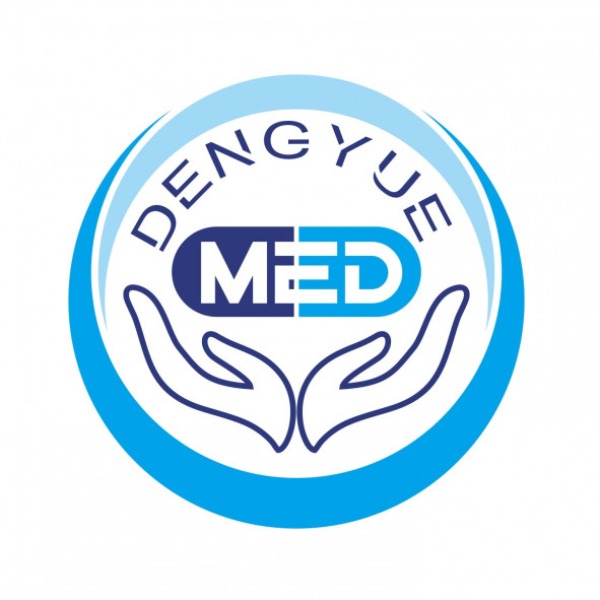China’s Innovative Drugs & Biopharma: How China Is Reshaping the Global Healthcare Landscape
By: DengYue International Business Division
Ten years ago, China was known primarily as a supplier of APIs and low-cost generic medicines to the world. Today, if someone tells you that China is developing, manufacturing, and exporting world-class oncology drugs, biologics, immunotherapies, and advanced formulations—you might be surprised. But the truth is this: China’s pharmaceutical industry is advancing toward this goal at remarkable speed.
Like an unknown actor suddenly stepping into a leading role, China’s pharmaceutical industry is no longer a “supporting character.” It is gaining the capabilities to influence and even define global treatment strategies.
This article explores the internationalization of China’s pharmaceutical sector from five angles: innovative drugs, export strategies, industry chain upgrades, policy drivers, and high-end biological therapies.
1. Innovative Drugs + Biopharma + Advanced Formulations as New Growth Engines
In 2024, China saw 32 domestically developed innovative drugs approved, a record high. Breakthroughs were seen in CAR-T therapies, ADCs, and other cutting-edge modalities. Biologics continued to gain market share, accounting for 27.9% in 2024. Leading companies invested over 5 billion RMB annually in R&D—evidence that China’s innovation capacity is rapidly consolidating.
Clinical examples showcasing China’s innovative drug capabilities
l CARsgen’s CT041 (Claudin18.2 CAR-T) demonstrated significant efficacy in Phase III trials, showing far higher response rates than traditional chemotherapy. It is the world’s first Claudin18.2 CAR-T to enter confirmatory trials and is expected to achieve international registration.
l Bioheng Biotech’s universal CAR-T (UCAR-T) achieved a 78% ORR in Phase I trials for B-cell lymphoma, with a 7-day manufacturing cycle and ~60% cost reduction—laying the groundwork for global scalability.
l Disitamab vedotin (RC48), approved for HER2-positive gastric and breast cancer, reflects China’s advanced ADC engineering capabilities.
l Ivonescimab (AK112), a dual-specificity antibody targeting PD-1 and VEGF-A for NSCLC, highlights innovation in integrated immunotherapy + targeted therapy.
These examples show that China has shifted from “generics + low cost + mass export” to “original innovation + advanced technologies + global standards + international competitiveness.”
Industry-wide data also confirms this trend—by 2025, Chinese companies account for ~41% of global bispecific antibody clinical pipelines (compared with only 12% in 2020). China is no longer just a follower—it is becoming a global frontrunner.
2. Global Expansion Through “Going-Out + International Certification + Compliance”
Many Chinese pharmaceutical companies are already exporting to Europe, the U.S., Asia, and Africa through FDA/EMA-recognized certifications.
License-out partnerships have become mainstream: Chinese companies license innovative drugs to multinational giants for global registration and commercialization.
Reports indicate that U.S. pharmaceutical companies are showing unprecedented interest in China’s biotech assets. In the first half of 2025 alone, 14 major licensing deals were completed, with a total value reaching several billion USD.
This model allows:
l Chinese firms → focus on early development, domestic launch, and manufacturing
l Multinationals → handle global registration, production, and commercialization
This accelerates global market entry and provides sustainable capital inflow.
On a policy level, China’s government has explicitly encouraged pharmaceutical exports, international registration, and regulatory cooperation, providing green channels for innovative drugs, cell/gene therapies, biologics, and medical devices.
3. Industrial Chain Upgrade: CDMO/CXO + Advanced Manufacturing
China’s pharmaceutical industry is shifting from API + generics to high-value service chains + advanced manufacturing + global-standard production.
CDMO / CRO / CXO growth
Large Chinese CDMOs (e.g., WuXi AppTec) have become essential partners for global and domestic drug R&D, production, and registration.
Advanced manufacturing & regulatory compliance
China is significantly upgrading GMP/GMP-equivalent facilities and establishing internationally aligned quality management systems. Policies also support:
l segmented manufacturing
l contract manufacturing
l cross-border production and export
Supply chain control + efficiency + cost advantage
China produces ~40% of global APIs. Cost advantages remain strong—key raw materials like penicillin, vitamin C, and heparin remain 30–50% cheaper than in Europe or the U.S.
With full supply chain integration and high compliance standards, China is evolving from a source of low-cost drugs to a provider of high-quality, cost-efficient, globally competitive pharmaceutical products.
4. Policy Drivers + Market Restructuring: Alignment with Global Standards
• Accelerated regulatory approval
Policies introduced in 2025 shortened innovative drug approval timelines to ~200 days, enabling faster domestic and international market launches.
• Domestic pressure reshapes industry structure
Reforms such as:
l volume-based procurement (VBP)
l dynamic reimbursement policies
l price controls
have squeezed the margins of traditional generics. As a result, companies are shifting toward exports, innovation, high-end biologics, and international markets.
• Regulatory alignment with global standards
China now encourages:
l pharmaceutical & medical device exports
l international regulatory cooperation
l standardized global-level manufacturing
This strengthens global trust in Chinese products.
5. Rapid Rise of Biotechnology, Biosimilars, and Advanced Therapies (CAR-T, ADCs, Cell & Immunotherapies)
As global demand for cancer, chronic disease, and immune-related treatments continues to grow, Chinese pharmaceutical companies are not only demonstrating strong innovation domestically but are also actively expanding into international markets. Biologics, monoclonal antibodies, ADCs, CAR-T therapies, and immunotherapies are becoming key drivers of China’s pharmaceutical exports and global presence.
• License-out and International Collaboration Become the Norm
Products such as RC48 and AK112 have secured overseas licensing agreements, allowing Chinese companies to retain rights in Asia while leveraging multinational partners to achieve global commercialization.
• Industrial Chain Advantages and Scalable Manufacturing Capacity
China has long held comprehensive industrial chain advantages in APIs, intermediates, and large-volume formulations. Combined with internationally aligned GMP-level quality systems, Chinese manufacturers can supply high-quality, stable biologics and advanced therapeutics.
For example, domestic companies have already achieved a 7-day manufacturing cycle for UCAR-T, positioning them to meet global patient demand through international partnerships.
This end-to-end capability—from R&D to production to export—provides the international market with a scalable, reproducible, and high-standard supply model.
• Policy Support and Priority Review Accelerate Globalization
Innovative drugs, biologics, cell/gene therapies, and advanced medical devices now benefit from priority review pathways and green channels, significantly shortening approval timelines. This allows China’s innovative therapies to reach the market faster while meeting the conditions for international registration and export.
In addition, national policies explicitly support pharmaceutical exports and alignment with global regulatory standards, providing legal and compliance assurance for Chinese companies entering global markets.
Potential Impacts on the International Market and Global Healthcare Systems
With China’s pharmaceutical industry accelerating innovation and globalization, Hong Kong DengYue Pharma, supported by a high-standard compliance system and a robust supply chain, is helping bring Chinese innovative drugs, biologics, and advanced formulations to worldwide markets—delivering real benefits to global healthcare systems and patients.
1. Reducing Global Drug Prices & Increasing Access
China’s cost-effective innovative drugs, generics, and biologics can help developing and middle-income countries reduce treatment costs and improve patient access.
2. Diversifying the Global Pharmaceutical Supply Chain
Reducing reliance on the U.S., Europe, or single production sources enhances supply chain stability and security. China’s emergence as a high-quality supplier supports global resilience.
3. Accelerating the Adoption of Advanced Therapies
If CAR-T therapies, biosimilars, and monoclonal antibodies overcome cost and production bottlenecks through China’s supply chain, treatments previously available only in wealthy nations could become accessible in more regions.
4. Promoting International Collaboration and Technology Transfer
Through license-out deals, co-development, and participation in global clinical trials, Chinese companies are fostering worldwide knowledge-sharing and accelerating the dissemination of new therapeutic technologies.
Conclusion
China’s pharmaceutical industry is at a pivotal turning point—transitioning from an era defined by low-cost generics and API exports to a new phase driven by innovative drugs, biopharmaceuticals, advanced therapies, global supply capabilities, and compliant export systems.
For the global healthcare ecosystem, this shift means not only more affordable, higher-quality treatment options but also the potential to reshape longstanding issues of unequal medical resource distribution, high drug prices, and limited treatment access.
In this transformation, Hong Kong DengYueMed plays a vital role. Through its commitment to excellence, innovation, sustainability, and social responsibility—and grounded in quality, compliance, and integrity—the company is helping elevate China’s pharmaceutical exports to new heights and contributing meaningfully to the health and well-being of patients worldwide.
- Like
- Reply
-
Share
About Us · User Accounts and Benefits · Privacy Policy · Management Center · FAQs
© 2025 MolecularCloud




